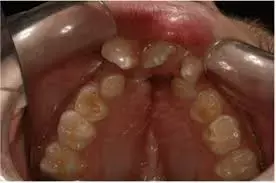- Home
- Medical news & Guidelines
- Anesthesiology
- Cardiology and CTVS
- Critical Care
- Dentistry
- Dermatology
- Diabetes and Endocrinology
- ENT
- Gastroenterology
- Medicine
- Nephrology
- Neurology
- Obstretics-Gynaecology
- Oncology
- Ophthalmology
- Orthopaedics
- Pediatrics-Neonatology
- Psychiatry
- Pulmonology
- Radiology
- Surgery
- Urology
- Laboratory Medicine
- Diet
- Nursing
- Paramedical
- Physiotherapy
- Health news
- Fact Check
- Bone Health Fact Check
- Brain Health Fact Check
- Cancer Related Fact Check
- Child Care Fact Check
- Dental and oral health fact check
- Diabetes and metabolic health fact check
- Diet and Nutrition Fact Check
- Eye and ENT Care Fact Check
- Fitness fact check
- Gut health fact check
- Heart health fact check
- Kidney health fact check
- Medical education fact check
- Men's health fact check
- Respiratory fact check
- Skin and hair care fact check
- Vaccine and Immunization fact check
- Women's health fact check
- AYUSH
- State News
- Andaman and Nicobar Islands
- Andhra Pradesh
- Arunachal Pradesh
- Assam
- Bihar
- Chandigarh
- Chattisgarh
- Dadra and Nagar Haveli
- Daman and Diu
- Delhi
- Goa
- Gujarat
- Haryana
- Himachal Pradesh
- Jammu & Kashmir
- Jharkhand
- Karnataka
- Kerala
- Ladakh
- Lakshadweep
- Madhya Pradesh
- Maharashtra
- Manipur
- Meghalaya
- Mizoram
- Nagaland
- Odisha
- Puducherry
- Punjab
- Rajasthan
- Sikkim
- Tamil Nadu
- Telangana
- Tripura
- Uttar Pradesh
- Uttrakhand
- West Bengal
- Medical Education
- Industry
Individuals born with cleft lip and palate have higher frequency of molar-incisor hypomineralization: Study

Individuals born with cleft lip and palate have a higher frequency of molar-incisor hypomineralisation suggests a study published in the Orthodontics & Craniofacial Research.
This study aimed to investigate the frequency of molar-incisor hypomineralization (MIH) in individuals born with cleft lip and or cleft palate. Three hundred eighty-six individuals born with cleft lip and/or palate before orthodontic treatment. All the individuals were submitted to a clinical examination and intraoral standardized photos. The registration of MIH was taken by two orthodontists and analysed in association with the cleft type and laterality. The Kruskal–Wallis test and the regression test were used to compare the frequency of molars and incisors affected according to cleft type and laterality, sex and age. Results: They found a frequency of 67.87% of MIH in the studied sample. The frequency varied from 25% (in individuals born with cleft palate) to 77% in individuals born with bilateral cleft lip and palate).
The number of affected molars was statistically different depending on cleft type and laterality (P < .001- Kruskal–Wallis test). Differences were found between individuals born with unilateral cleft lip and palate and unilateral cleft lip and alveolus (P = .03), and with isolated cleft palate (P = .03), and between individuals born with bilateral cleft lip and palate and born with unilateral cleft lip and alveolus (P = .01), and cleft palate (P = .01). Sex (P = .21) and age (P = .36) had no influence on the frequency of MIH. A positive correlation was found between the number of molars affected and incisors affected (P < .001). Individuals born with cleft lip and palate have a higher frequency of MIH, and the complexity of cleft type was associated with the number of affected molars.
Reference:
Wanderley Lacerda RH, Filgueiras VM, Guedes Mendonça AC, Vieira AR. Molar-incisor hypomineralization in a cohort of individuals born with cleft lip and palate. Orthod Craniofac Res. 2024; 27(Suppl. 1): 21-26. doi:10.1111/ocr.12708
Dr. Shravani Dali has completed her BDS from Pravara institute of medical sciences, loni. Following which she extensively worked in the healthcare sector for 2+ years. She has been actively involved in writing blogs in field of health and wellness. Currently she is pursuing her Masters of public health-health administration from Tata institute of social sciences. She can be contacted at editorial@medicaldialogues.in.
Dr Kamal Kant Kohli-MBBS, DTCD- a chest specialist with more than 30 years of practice and a flair for writing clinical articles, Dr Kamal Kant Kohli joined Medical Dialogues as a Chief Editor of Medical News. Besides writing articles, as an editor, he proofreads and verifies all the medical content published on Medical Dialogues including those coming from journals, studies,medical conferences,guidelines etc. Email: drkohli@medicaldialogues.in. Contact no. 011-43720751


